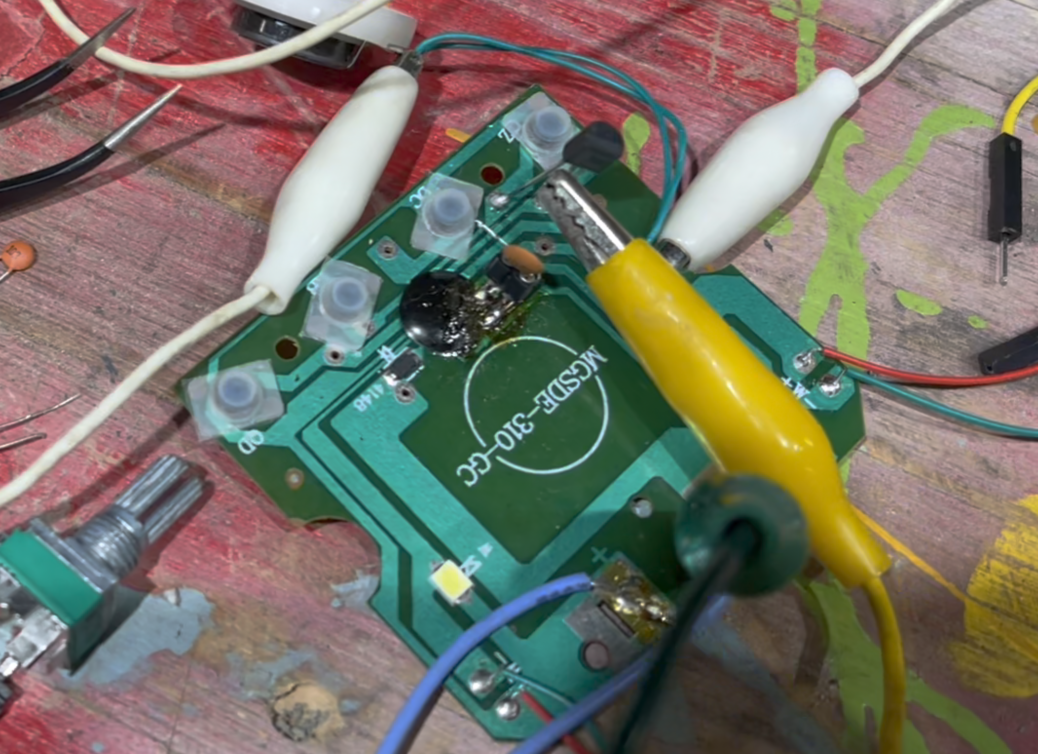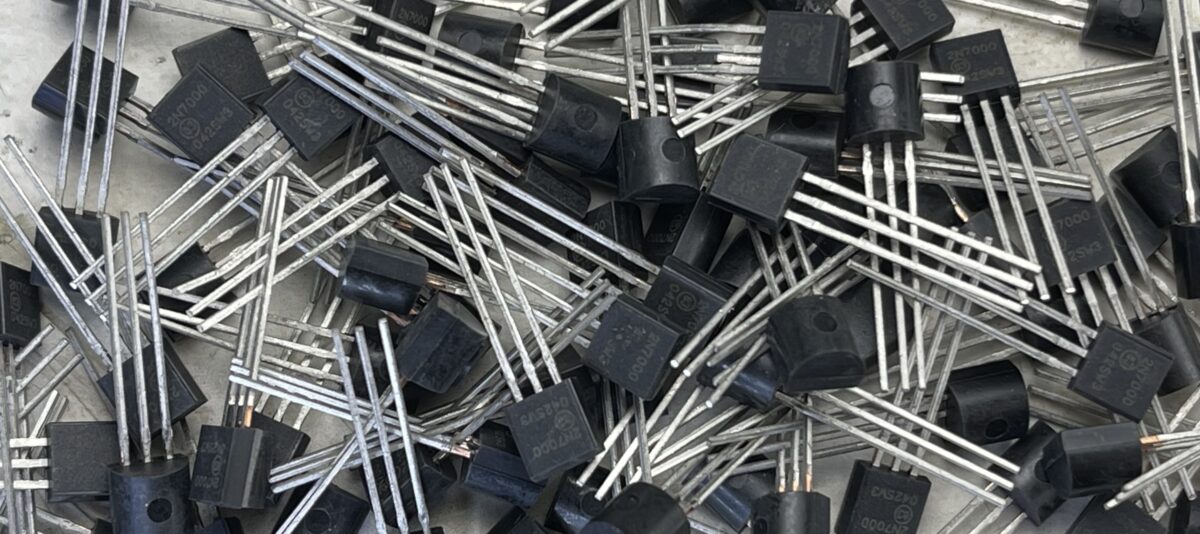About a year ago, I posted a video about using MOSFETS to control voltage in devices (instruments?) that were never intended to have that kind of control. I chose the 2n7000 MOSFET because it acts like a resistor in the range of voltages we usually care about in synthesizers, around 0-10V. In the second video, I added a resistor to prevent drawing too much current and blowing the transistor. But that’s not (usually) necessary for a tiny, battery-powered toy, particularly a low-voltage, low-current digital one!

What’s happening here is that an increase of voltage at the Gate opens up the transistor, which then shorts the switch that it’s replacing. It doesn’t open up until it reaches 0.7V, but the usual range of voltages we’d expect is up to +5. So as long as our triggering voltage is above 0.8V, it will act at least a little like the switch has been pressed. The microcontroller needs a particular voltage to register it as well, but the nice thing about this setup is that, as long as “ground” on all components is connected, this MOSFET only transmits current and voltage that this one component already expects. In that way, we can isolate components from each other.
In this case, I sent it signals from a sequencer — an instrument that sends voltage levels in sequence that often correspond to notes. In this case, though, it’s just sending on and off signals.
This will work for adding a gate to just about any existing switch! Here’s an even weirder toy with the same trick applied, as well as an audio out installed into the back of its head!
It has a momentary switch in its belly button that we shorted with the transistor. And now it has a really rude sense of humor.

